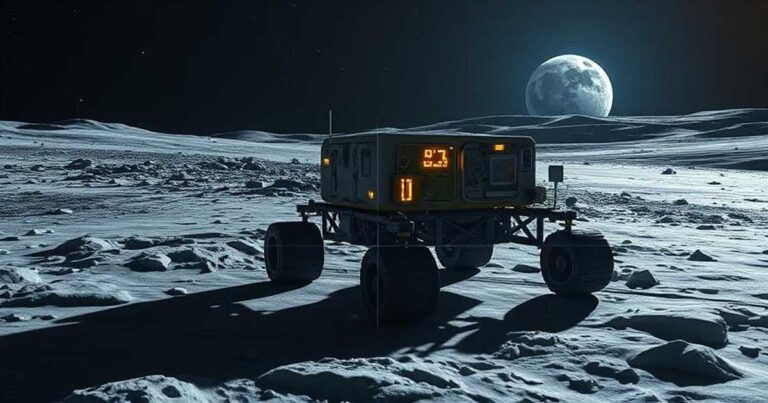In a monumental milestone for Indian space exploration, the Indian Space Research Organisation (ISRO) has successfully completed its most ambitious lunar mission to date. The Chandrayaan-4 mission has placed a fully automated robotic research lab at the Moon’s south pole, marking the first time in history any nation has established such a presence in this challenging and unexplored region.
ISRO Chairman Dr. S. Somanath shared at a press briefing:
“Chandrayaan-4 is not just a space mission; it is a testament to India’s scientific vision and global leadership in space research.”
Key Features of the Chandrayaan-4 Mission:
| Feature | Details |
|---|---|
| Launch Date | February 15, 2025 |
| Landing Site | Moon’s South Pole |
| Lab Name | ShivShakti-2 Rover Lab |
| Main Objectives | Discover presence of water, analyze lunar soil & mineral composition |
| Operation Mode | Fully remote with AI-based navigation |
| Mission Duration | Initially 6 months (renewable) |
Global Reactions:
Space agencies like NASA, ESA (European Space Agency), and JAXA (Japan) congratulated India on this historic accomplishment. NASA described it as:
“A groundbreaking achievement that strengthens the global scientific alliance.”
Expert Commentary:
Renowned space scientist Professor Vinay Rao stated:
“The south pole of the Moon holds great potential due to permanent shadow regions and the presence of ice. This mission could pave the way for future lunar habitats.”
India’s Scientific Pride:
With Chandrayaan-4, India joins the elite club of countries with successful landings on the Moon’s polar regions, following Russia, China, and the United States. However, India is the first to establish a robotic research lab in this sector.
Conclusion:
The successful landing and deployment of ShivShakti-2 mark a new era in Indian space exploration. Chandrayaan-4 not only boosts national pride but also inspires a new generation of scientists, researchers, and dreamers.
Frequently Asked Questions
What is Chandrayaan-4?
Chandrayaan-4 is India’s fourth lunar mission launched by ISRO, focused on deploying a robotic lab at the Moon’s south pole for scientific research and water detection.
Why is the Moon’s south pole important?
The Moon’s south pole contains permanently shadowed regions, which may hold frozen water (ice) and untouched minerals—making it crucial for future lunar colonization and space exploration.
What is special about the ShivShakti-2 Rover Lab?
The ShivShakti-2 Rover Lab is a fully automated robotic research unit equipped with AI technology to study lunar soil composition, water ice, and mineral distribution over a six-month mission.
Which countries have landed near the Moon’s south pole before India?
Before India, only Russia, China, and the United States had achieved landings on the Moon. However, India is the first to establish a research lab at the Moon’s south pole.
How long will the Chandrayaan-4 mission last?
The primary duration of the Chandrayaan-4 mission is six months, but ISRO has stated that the mission could be extended based on its performance and data returns.
